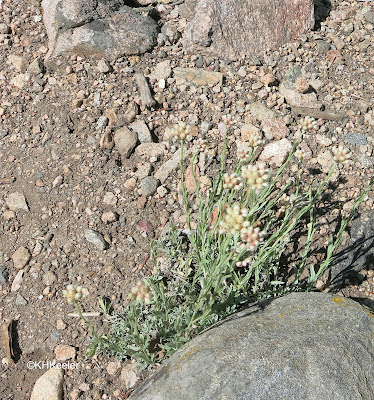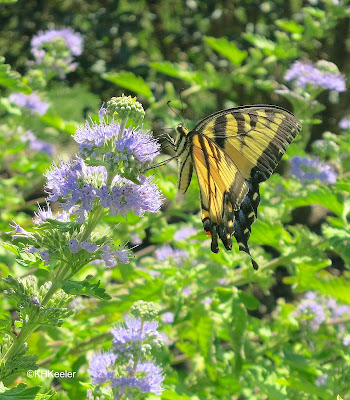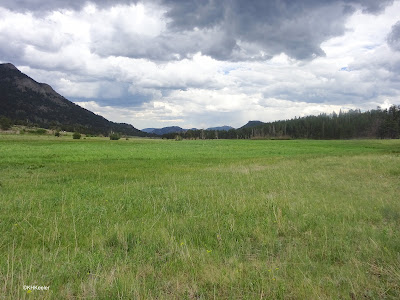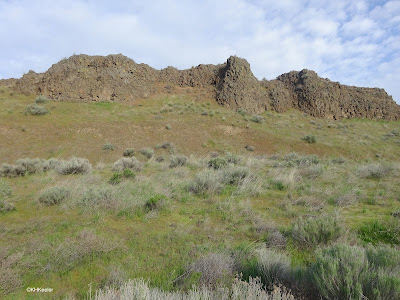Pussytoes (Antennaria species, sunflower family, Asteraceae) are cute little plants, easy to recognize when flowering, inconspicuous when they are not. There are about 45 species of Antennaria, mostly in North America plus a few in Europe and South America. The U.S.D.A. plants database gives 36 species of Antennaria in North America, counting Alaska, all of them native.
 |
| Antennaria pussytoes |
When flowering, they send up clusters of round flowers, easily imagined as cat feet. (Catsfoot is another common name). The non-flowering plant is a cluster of quite small oval gray-green leaves on the ground, often below the grasses, and so quite inconspicuous.


















































